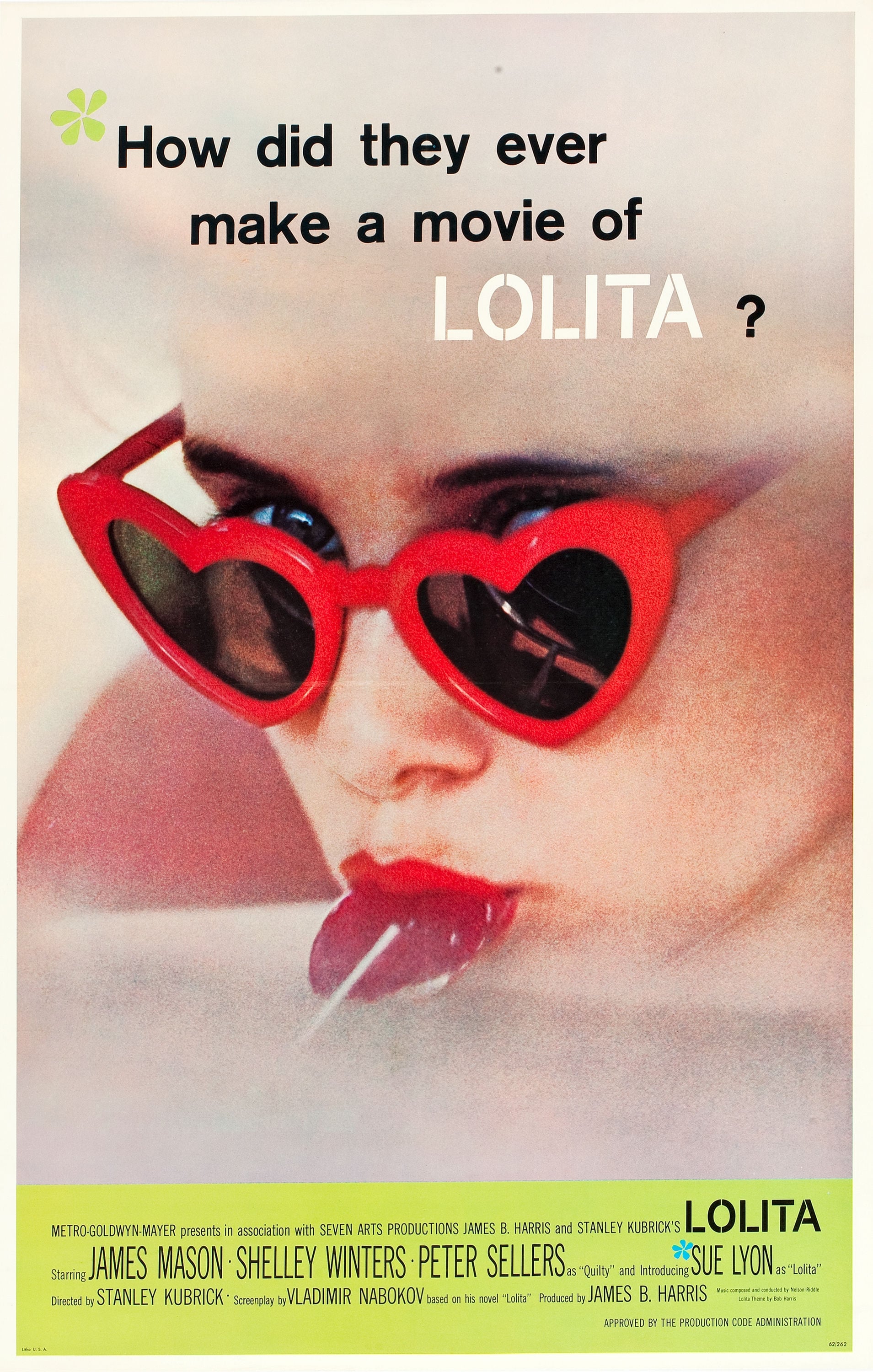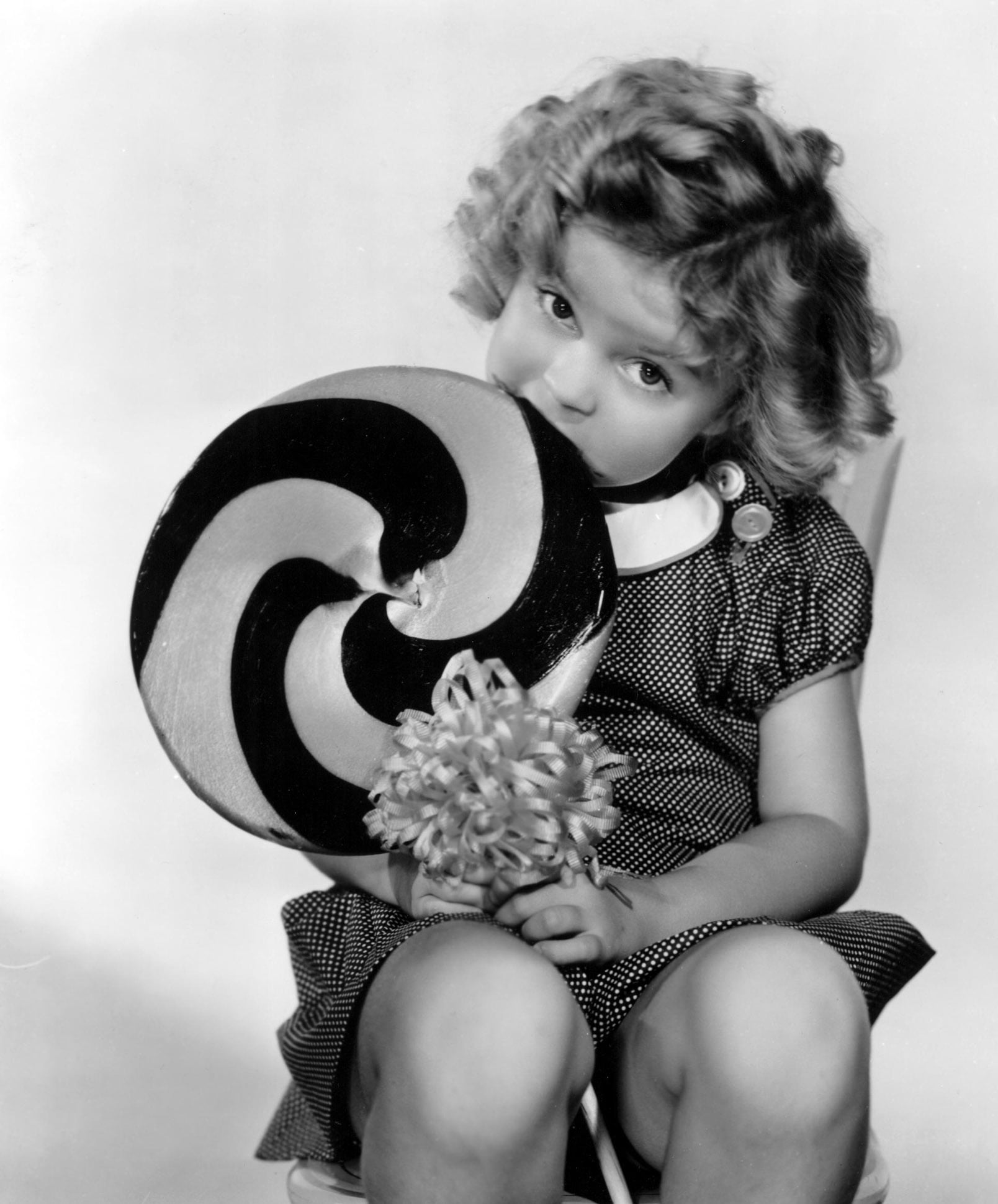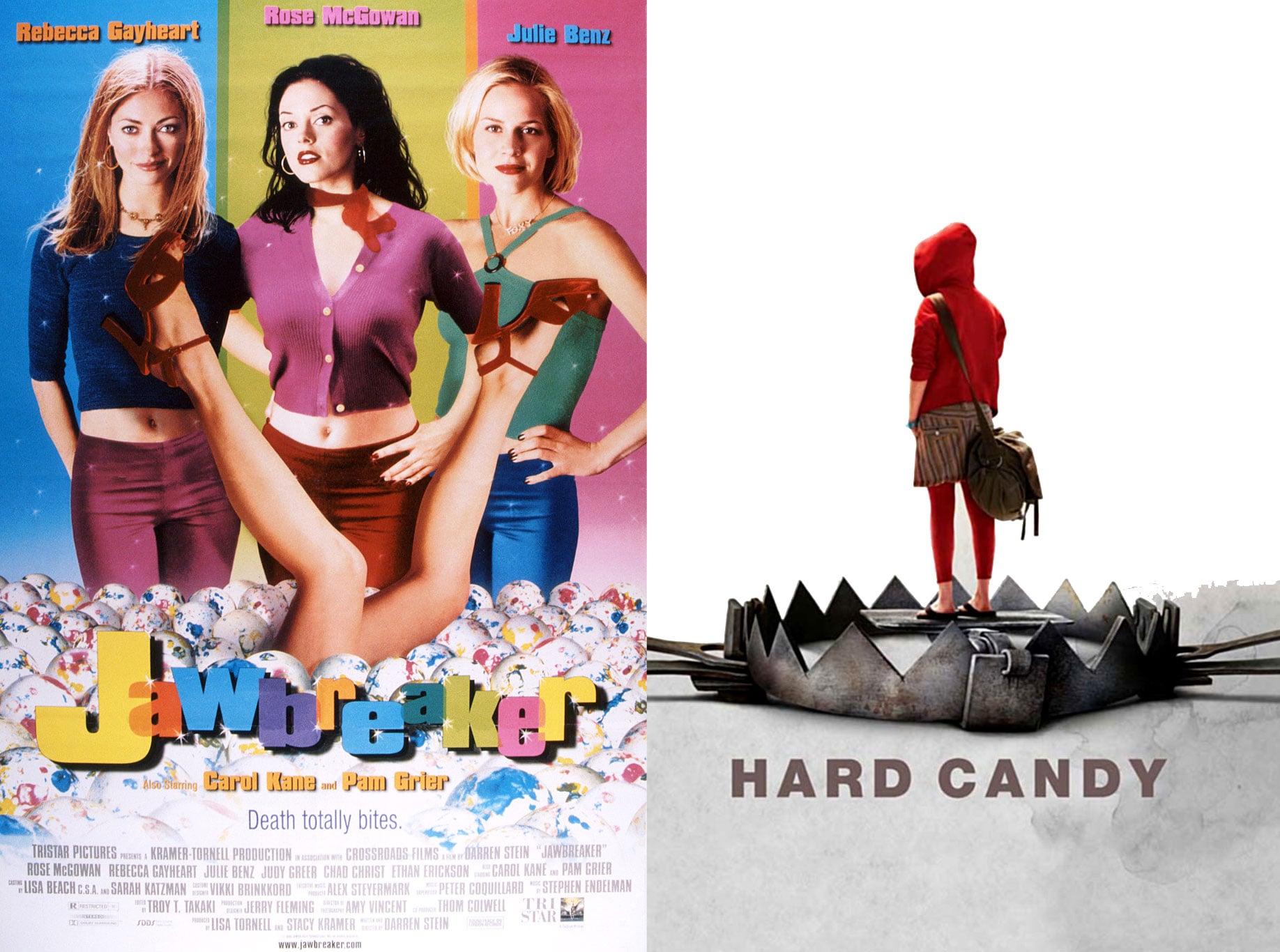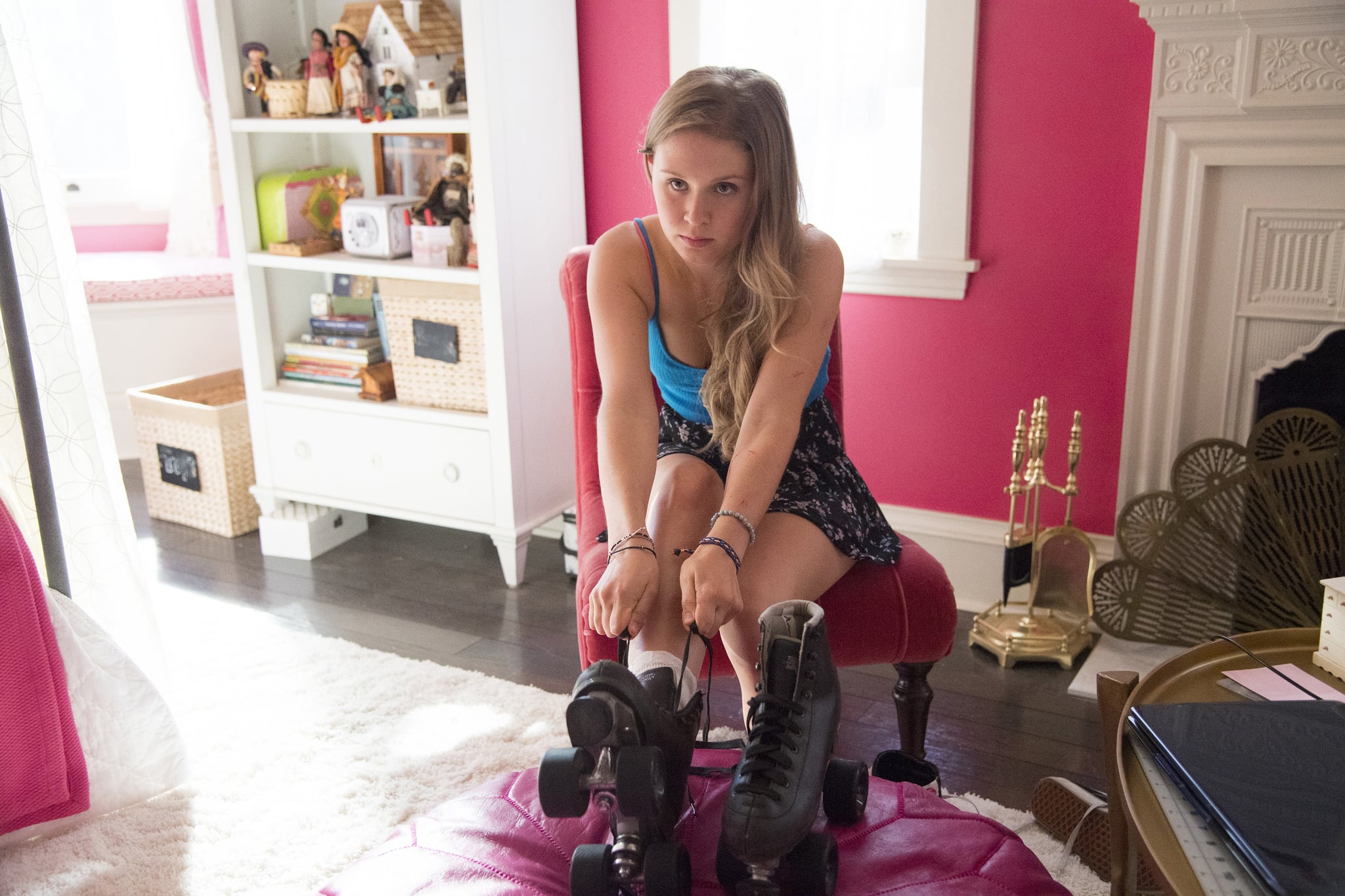
In one of the most widely recognised images of Vladimir Nabokov's titular Lolita, a car's rearview mirror tightly frames the face of a fair-haired, fair-skinned girl. Her precocious gaze holds our attention from just behind the heart-shaped sunglasses perched atop her nose. The sunglasses are bright red, a perfect match for the girl's cherry-stained mouth and the lollipop that rests between her lips.
But suckers and sunglasses never appeared in Nabokov's 1955 novel. They didn't turn up in Stanley Kubrick's 1962 film, either. Rather, these props were selected by fashion photographer Bert Stern, who shot the promotional stills for Kubrick's Lolita [1] in 1961. Stern purchased them at a five-and-dime to adorn Sue Lyon, the 14-year-old actress cast in the role of Dolores "Lolita" Haze.
The lollipop has come to signify a coquettish temptress: young, sweet, sexy.
Since then, the lollipop has come to signify a coquettish temptress: young, sweet, sexy. A controversial ad campaign for Love's Baby Soft perfume in the 1970s featured a woman holding a lollipop to her cheek with the tagline, "Because innocence is sexier than you think." Children of the '90s may remember the lollipop as a natural if not all-too-obvious prop for Baby Spice of the Spice Girls. And it would not be a stretch to suggest that Lil Wayne's 2008 song "Lollipop" [2] does not simply imply its objectifying motif but pushes the metaphor to its explicit end. Despite how sharply this seductive, hypersexual distillation contrasts with Nabokov's Lolita [3], a 12-year-old girl violated at the hands of an adult abuser, the trope has persisted for decades.

Shirley Temple in Bright Eyes
In her article "Rewriting Lolita in Fashion Photography: Candy, Consumption, and Dying Flowers," Dr. Morna Laing details how such media references point to a culture historically fixated on a fetishized tension between girlhood and womanhood, in which young girls are oversexualized and adult women are infantilized. There's a term for it, "nymphetmania," [4] and it has a cinematic history that long predates Lolita. Lollipops can be found at the origins of this pedigree, linked especially to Shirley Temple. In the early-1930s, Temple sang "The Good Ship Lollipop" [5] to an audience of fondling men in the film Bright Eyes and performed with the candy in hand in a series of films called Baby Burlesks [6], which – you guessed it – are about toddlers playacting adult burlesque shows.
Beware the Girl With the Sweet Tooth
But today's popular culture has seen a notable shift in the way this stylistic device is brandished. Instead of alluding to an illicit fascination with girlish naiveté, the lollipop has increasingly been wielded as a double-edged sword. On USA's Mr. Robot, FBI agent Dominique DiPierro (Grace Gummer) has a habit of consuming lollipops while pursuing the bad guys. Suckers are a signature of DC Comics' good-doctor-gone-evil, Harley Quinn. In the 2007 remake of Hairspray, Amanda Bynes's Penny Pingleton devours the candy as her character dives into 1960s counterculture. And most recently, a lollipop popped up in a pivotal exchange between Amy Adams's tortured Camille and Eliza Scanlen's devilish Amma on HBO's Sharp Objects, a series entirely coated in layers of sugar, spice, and everything malevolent.
Every rose has its thorn, every piece of hard candy has its jagged edge, and every jawbreaker can, well, break your jaw.
The subversion of candy as an emblem of feminine sweetness is also rooted in the premise of several films, including 1999's Jawbreaker, 2001's Sugar and Spice, and 2005's Hard Candy — which, coincidentally, was titled Lollipop in some foreign markets. Each employs the saccharine symbol to connote the merging of two seemingly disparate personas: the damsel in distress and the femme fatale. Every rose has its thorn, every piece of hard candy has its jagged edge, and every jawbreaker can, well, break your jaw.

Without giving too much away, broken jaws and thorny roses are precisely what Sharp Objects delivers. The miniseries, based on Gillian Flynn's 2006 novel of the same name, follows Camille Preaker (Amy Adams), a journalist dispatched to her hometown of Wind Gap, MO, to cover the grisly murders of two 13-year-old girls. While there, Camille is haunted by her past and confronted with the fraught relationships she has with her mother, Adora (Patricia Clarkson), and half-sister, Amma. Wind Gap itself is portrayed as a dreamscape filled with lurid secrets, a town oozing equal parts treacle and horror. Episode titles like "Milk" and "Ripe" likewise invoke things that are wholesome only until they spoil.
Which brings us to the duplicitous Amma [7] (Scanlen), a baby-faced sociopath on roller skates. Amma wears ribbons in her hair. She obsesses over her meticulously decorated dollhouse. She's a daddy's girl and mama's princess. At least by day, anyway. By night, she is cruel and cunning. In her dealings with Camille, Amma swings from sickly sweet to savage. In the episode "Fix," we see Amma melt into her sister, cradling Camille and begging for her affections. By the end of the hour, Amma's physical attention has turned menacing. Finding Camille in a parking lot with Richard Willis (Chris Messina), the detective investigating the Wind Gap murders, Amma – her friends circling like a pack of wolves – unleashes. "I heard Camille is a real hot ticket. Or she was," Amma taunts with satisfaction. "You should hear the stories, Dick." When Camille turns to retreat, Amma takes the red lollipop she's been sucking and sticks it in her sister's hair, twisting it like a knife in the back.

Amma (Eliza Scanlen) on Sharp Objects. Image Source: HBO [8]
The scene highlights the series's underlying tension, one articulated by Chief Bill Vickery (Matt Craven), who describes Adora's daughters this way: "One is dangerous and one is in danger." But who is who? Made in the binary image of their mother – the malicious martyr – Camille and Amma have been manipulated like paper dolls, forced to wear the costumes of princess and rebel, unfolding to reveal the show's central paradox: that the "bad" girl is actually "good" and the "good" girl is terrifyingly "bad."
From Siren Song to Sucker Punch

Darlene (Carly Chaikin) and Elliot (Rami Malek) on Mr. Robot. Image Source: Getty [9]
Like Sharp Objects, several characters act as warped mirrors of each other on Mr. Robot, and two of them happen to share a penchant for Lolita's iconic style: Dominique "Dom" DiPierro (Gummer), an FBI agent investigating the hacktivist group "fsociety," and Darlene Alderson (Carly Chaikin), an fsociety member. While Dom is rarely caught in deep thought without a lollipop in her mouth, Darlene is often sporting a pair of heart-shaped sunglasses. Sealing the allusion is Darlene's screen name: "Dolores Haze." Dom and Darlene have much in common. They both left boyfriends after they had proposed. They bond over being "Jersey girls." And when the FBI brings in Darlene, Dom pushes to question her, stating, "I am her." Fan theories abound as to how these characters are connected (and if you would like to go down a Reddit rabbit hole, I can send along some links).
But where the lollipop scene in Sharp Objects signifies a "female sort of rage," as Camille describes it, in Mr. Robot, we find not so much vengeance as vulnerability. Dom and Darlene are both self-possessed forces to be reckoned with, and yet – at least by the end of the third season – they have been undone. Between their professional objectives and personal lives, both characters appear to oscillate between invincibility and fragility. This ceaseless tension may ultimately underscore how the very determination that puts them at risk might translate into the instincts necessary to survive.
Though this symbolism is differently deployed in Sharp Objects, Jen Chaney, pop culture critic at New York Magazine, notices that both shows may draw upon Lolita imagery for a shared purpose: "to misdirect us as viewers." In the case of Amma, "her dresses and dollhouses can be viewed as clever armor that distracts from seeing her for who she is." In Mr. Robot, the Lolita connection may have initially been used to obscure Darlene's relationship to Elliot. Chaney observes that the heart-shaped sunglasses "helped visually to bolster the case that they might be lovers or former lovers, but then it ultimately turned out that they were siblings." And while Chaney associates Dom's lollipop more closely with Tootsie Pop-addicted Kojak than Lolita, this too may prove a skillful maneuver on the part of the showrunners to keep us on our toes. Guarding a soft underbelly beneath the hardened exterior of a gritty New York detective, Dom is a complex character, and I suspect what she's fully capable of is yet to be revealed.
Given its versatile role in these instances – encapsulating vulnerability and rage, innocence and dominance – what do we make of the lollipop? Once a symbol of budding sexuality meant for consumption, it seems this outdated trope has been co-opted. Perhaps these portrayals represent a move toward more fluid ideas of femininity, in which women are neither temptresses nor angels, but multifaceted beings who can exhibit more than one characteristic at a time?
Possibly. But it's also important not to take any of these overt dualisms at face value. Dr. Johanna Blakley, manageing director at USC's Norman Lear Centre, reminds us that the split persona of the demure villainess is both limited in scope and nothing new. This oppositional archetype "is endemic to Western discourse and its literary canon." From "Like a Virgin" to "Like a Prayer," Madonna built an entire career exploiting the virgin-whore dichotomy. We could even trace the lollipop's symbolism all the way back to when Eve tempted Adam with the apple or to stories of Sirens luring sailors with their entrancing songs.
These recent uses of the lollipop are certainly variations on this theme, but something else is different. Unlike Eve and the Sirens, when Amma and Dom engage this trope, it is not men who fall but women. It is in this context that Flynn's "sharp objects" become more broadly symbolic. They explicitly refer to the items used to murder those little girls and the razor blades Camille harms herself with, yes. But they also bring to the forefront those figuratively cited: the roller blades, rosebushes, and ribbons. These are the objects long used to minimize an entire gender to pretty playthings. Chaney describes them as symbols that "can be used counterintuitively to imply power. Historically speaking, society tends to not take girly things very seriously. They're deemed frivolous or silly and childish." In Sharp Objects and Mr. Robot, however, these items have been weaponized, sharpened to slice and dice the antiquated tales of flowery virgins to be saved by men or lascivious women who will bring those same men down. Those myths are much too simple, and showrunners like Flynn and Killing Eve's Phoebe Waller-Bridge know it. Perhaps this is the fundamental shift: that increasingly women are authoring stories about women, in which men are pushed to the peripheries.
Resistance or Acquiescence?

Consider the character Villanelle (Jodie Comer) in Waller-Bridge's Killing Eve. A modern-day Siren, Villanelle uses her feminine charms to beguile her targets, wears layers of pink tulle to taunt her superiors, and murders her victims with poisoned perfumes and hairpins she handles like the ice pick from Basic Instinct. Villanelle sees men as easily manipulated and entirely expendable. Her real fascination is with Eve (Sandra Oh), the woman charged with her capture. After killing Eve's investigative partner, Villanelle explains, "He was slowing you down." Similarly, after Amma sticks the lollipop in Camille's hair, she baits her sister into hitting her: "Be dangerous like Mama said. You could kill me right here, and you know what? Dickie boy still couldn't figure it out." It is as if Villanelle and Amma are enticing their respective rivals to play a game that's just for girls. This female autonomy imbues Killing Eve's title with biblical meaning. Beware old tales of women as mere objects of temptation or scorn — these shows are coming for you.
But maybe I'm getting ahead of myself. Such productions might have simply found a way to have their cake and eat it, too. Sure, our favourite female characters may be complex, confident, smart, tenacious, or cunning, with a thoughtful backstory. But it likely doesn't hurt that Harley Quinn looks pretty good licking that lollipop.
So, do these representations merely reinforce exploitative conventions? Blakley is optimistic, telling POPSUGAR that shows like Sharp Objects and Killing Eve "are being quite self-conscious about how they're using girlie-ness [and] that in itself is a sign of progress." But Blakley cautions we have a long way to go until props like lollipops and dollhouses are seen as just that and not "inevitable signals of femininity."
Increasingly, women are authoring stories about women in which men are pushed to the peripheries.
Acknowledging that the use of "sexy female stereotypes" as a means to get norm-bending projects produced might seem naive to some, Blakley also understands how difficult it is to get subversive projects greenlit within the mainstream. But once they're out in the world, they "have a chance to challenge people's assumptions and create new perspectives on gender and sexuality."
Reclaiming Agency
Though the shifting signification of the lollipop may seem trivial, it speaks to a macrocosm of changes underway. Time is finally up for many things, and this includes the historic lack of women in the director's chair [10]. More women behind the scenes means more opportunities to shatter clichés and reconfigure symbols – lollipops included – that have long been used to objectify women and girls.
Granted, access to leadership positions alone is not remedy enough, and some critics might perceive any engagement with reductive tropes as counterproductive. But shows like Sharp Objects, Mr. Robot, and Killing Eve push back on the very norms of gender and sexuality they are tethered to, leverageing outmoded emblems of femininity in order to redefine them. And in so doing, the women of film and television may finally be able to reclaim the agency once denied to Dolores "Lolita" Haze.